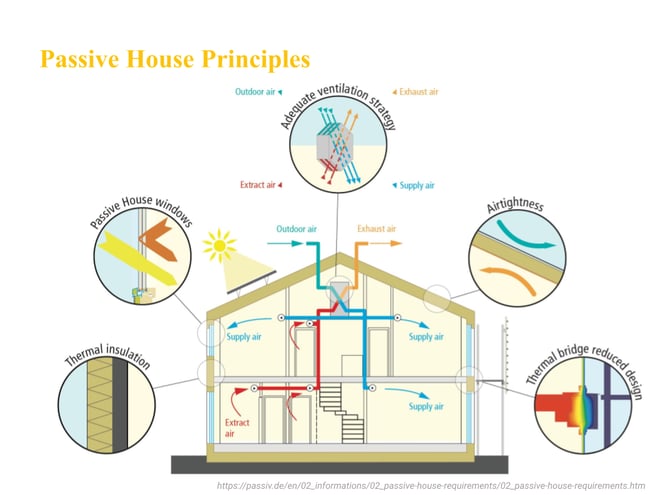A Blueprint for Optimizing Operational Energy in Buildings
Micène Fontaine, August 16, 2023
Are you passionate about minimizing the environmental impact of your design projects?
Optimizing operational energy not only lowers operational costs but also crafts a legacy of responsible design for generations to come. As architects and interior designers, you hold the blueprint for a better world.
Data reveals that buildings are responsible for a significant chunk of global energy consumption (up to 40% in some regions), with operational energy being a major culprit. Operational energy is the energy needed to power and maintain a building's functions. Each material chosen and each construction method employed, contributes to the energy consumption of a building, impacting the planet long before it opens its doors. By employing strategies to reduce energy consumption, architects and interior designers can steer their projects towards a greener path.
Where do we start?
- Harness Natural Light: A simple yet transformative step is maximizing natural light. Strategically positioned windows and skylights can drastically reduce the need for artificial lighting during the day. The result? A breathtaking interplay of light and shadow that reduces energy consumption and enhances the aesthetic appeal of the space. For more reasons to incorporate natural light into your projects, read our blog "Turning Lighting Research into Practice."
- Smart Material Selection: Opt for energy-efficient materials with excellent insulation properties. These choices can help to regulate interior temperatures, minimizing the need for excessive heating or cooling.
- Embrace Intelligent Systems: Incorporate smart systems that monitor and optimize energy use. From automated lighting that responds to occupancy to HVAC systems that learn and adapt, these innovations make efficiency effortless.
By embracing these basic Passive House principles, you can cut energy consumption while making a genuine impact by shaping spaces that are aesthetically remarkable and ecologically responsible. For more design strategies to achieving operational energy goals, check out our Change by Design session "Optimizing Operational Energy Consumption in Buildings."
Here's to reducing energy waste - by design.





